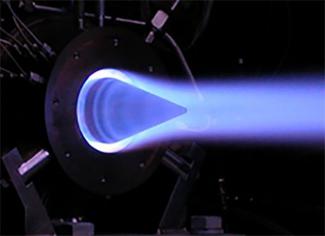The U.S. Department of Energy’s (DOE) Advanced Turbine Program has helped create next-generation turbine technologies to ensure that the nation’s growing demand for energy will always be met by producing reliable, affordable, diverse, and environmentally friendly energy supplies through a multifaceted approach. Now, researchers are eyeing additional advances by innovating technologies that are based on different forms of combustion.
Currently, large gas turbine engines can achieve a combined cycle plant efficiency of just over 60 percent. This efficiency level has been accomplished, in large part, because of technology improvements that allow turbines to combust at higher temperatures. But even more efficiency increases are possible, and experts at the National Energy Technology Laboratory (NETL) are zeroing in on the possibilities.
As part of the Advanced Turbine Program, researchers at NETL are studying one promising option called pressure gain combustion (PGC)—a process that not only creates high temperatures but also increases the pressure in a turbine by using a transient, rather than steady, combustion process based on a controlled and continuous detonation. Program objectives are to identify and address knowledge gaps, define a realistic pathway for implementing PGC in a gas turbine engine for land based power generation, and provide experimental data for model validation. The Program’s research has demonstrated that increasing gas pressure during combustion can also increase thermal efficiency, impacting overall plant efficiency, and bringing the program goal of 65 percent efficiency within reach.
In theory, gas turbine engines use what is known as a constant pressure combustion process that is based on a form of combustion known as deflagration. In reality, combustion through deflagration creates a pressure loss that results in decreased efficiency. Alternatively, NETL researchers are investigating a novel combustion approach known as Rotating Detonation Combustion (RDC), a form of PGC, that creates a controlled, continuous detonation wave that rotates around the inside of a modified gas turbine combustion chamber. Because the detonation, which occurs in a small region at the front of the combustion chamber, is so rapid, the flow appears steady to the turbine. Studies suggest this approach would result in a 2 to 4 percent improvement in combined cycle efficiency, which could translate to a vast reduction in carbon emissions—potentially without increasing the cost of electricity.
Using a continuous detonation wave for pressure gain combustion to increase efficiency in gas turbine engines is not well understood and too risky from a business perspective for industry to explore on its own. DOE’s funding of internal, academic, and private sector research in PGC helps to offset some of this risk and has facilitated ongoing collaborations on this exciting new technology. These relationships help to accelerate the application of PGC and similar technologies in the private sector.
In addition to continuing experimental research, NETL performs extensive computational fluid dynamics (CFD) modeling of the RDC process, and these models provide valuable information that is used to characterize overall thermal efficiency, pressure gain and loss, and potential turbine work. Experimental data collected in NETL’s lab-scale experiments are used to help refine the accuracy of their CFD models and is also made available to the research community (other federal laboratories, academia, and private industry) to aid in their modeling efforts.
The Laboratory’s ground-breaking PGC research has attracted the attention of academia and industry, and several NETL-funded projects have achieved significant success, including work with Aerojet Rocketdyne, Penn State University, the University of Michigan, Oregon University, and Purdue University. Working with partners increases NETL’s impact, and ultimately this research, conducted by individuals with extensive aeroacoustics and combustor design expertise, will lead to combined cycle power plants with higher efficiency and reduced emissions for greater energy security, environmental improvements, and a stronger economy.




